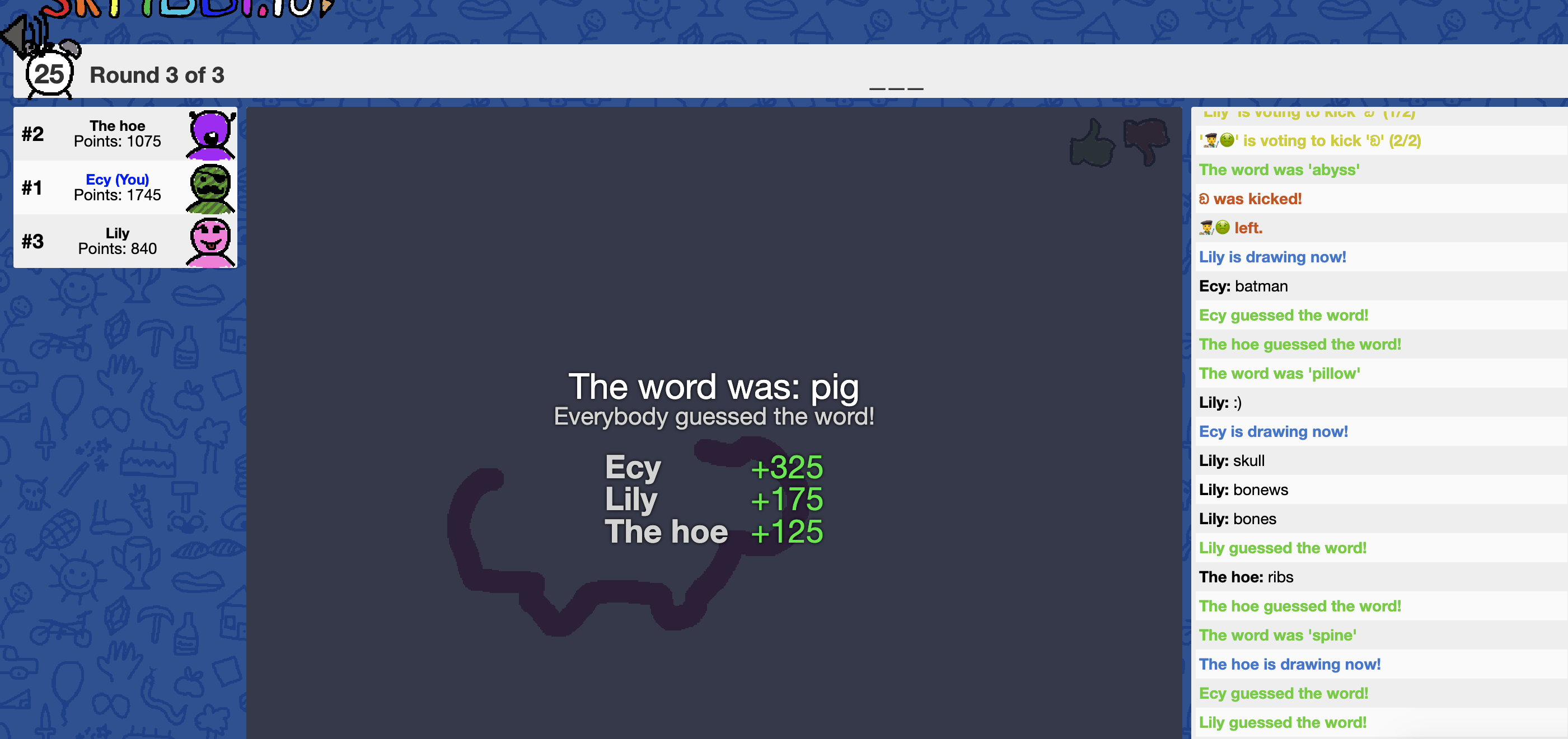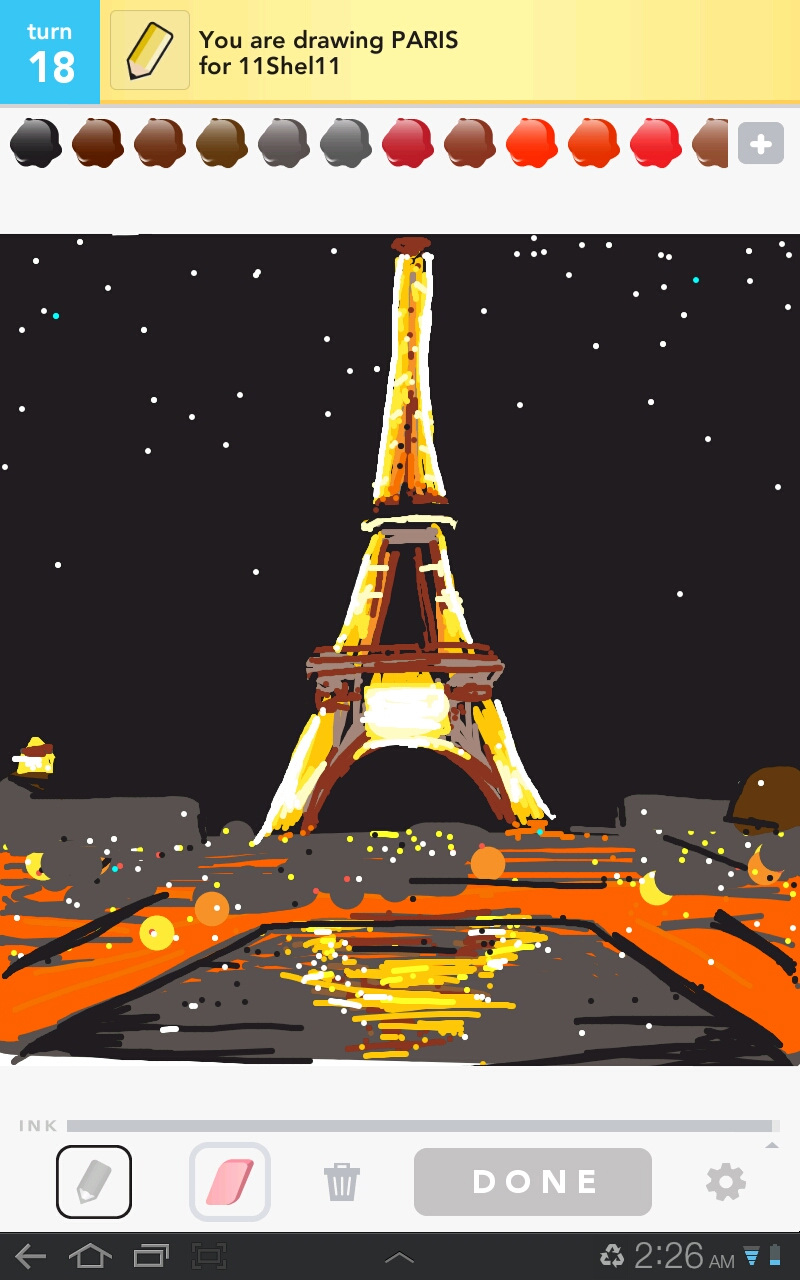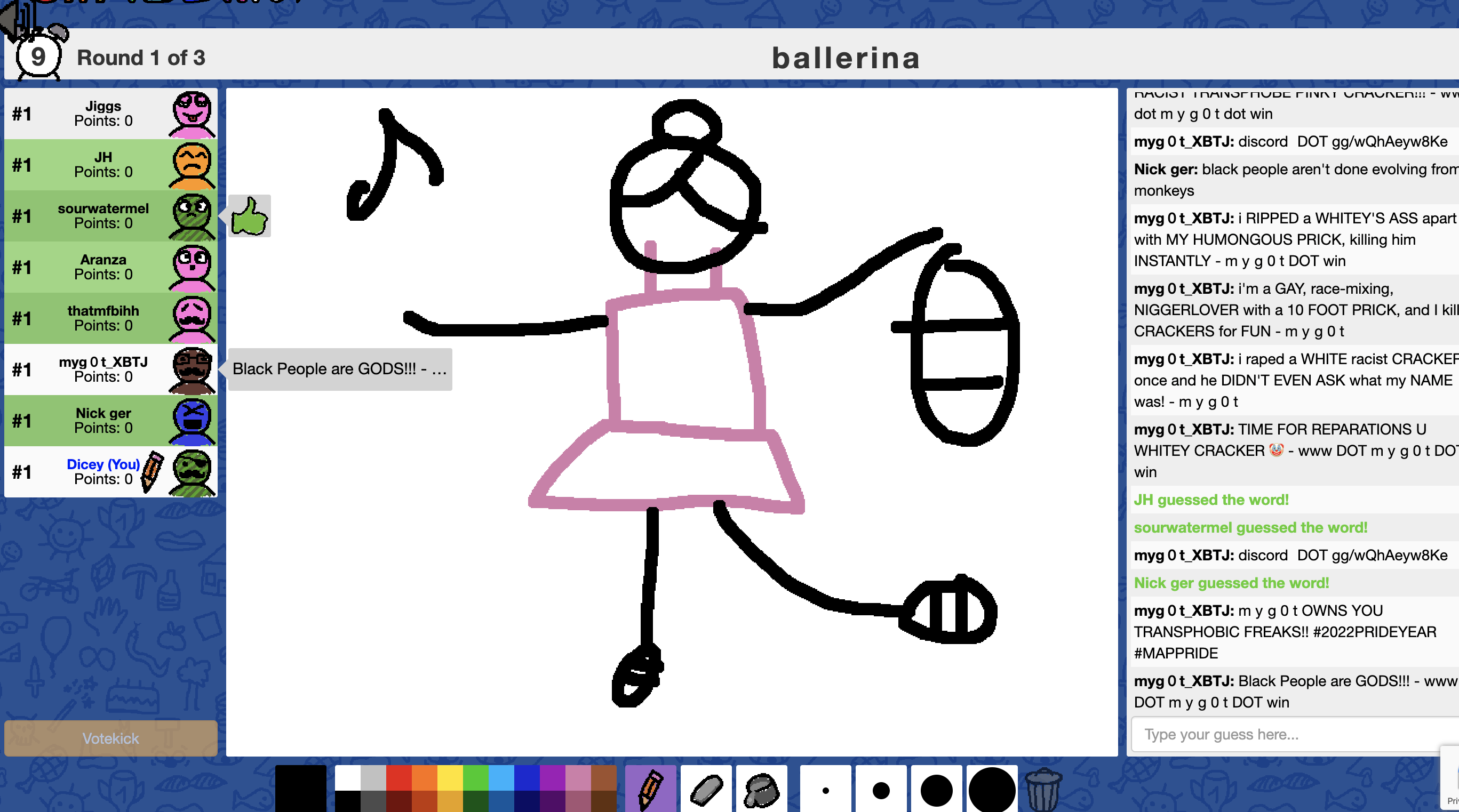On my computer, I played Skribbl.io online. It was originally made by a developer named Mel who goes by ticedev in March of 2018. With the game’s colorful, engaging, & animated graphics, the varying difficulty of words, and general accessibility, its target audience is indeed broad, starting from age 8+. It’s one of those rare gems that is basically “for all ages”. Many vibrant colors are employed, and the header and characters are actually animated and dynamic, moving like how you would imagine scribbles to. This extraneous element albeit technically unnecessary can keep young kids and adults alike initially attracted and continuously engaged.

As for the formal elements, the game has many. It is an up to 12-person multiplayer game involving multilateral competition. The objective is to try and win the most points by 1) guessing the correct word as a “guesser”, and 2) getting as many correct guesses possible as a “drawer”. Each round consists of everyone taking turns as the “drawer”, and there are 3 total rounds, a nice number that scales nicely as you add or subtract players.
Some of the core elements involve a timer— which starts off at different times depending on the difficulty of the word— and points assigned to each player based on how quickly they guess. Interestingly enough, there is some type of calculation based on how quickly people guess your word as the “drawer”. I’m not totally sure what the exact formula is, only that you are incentivized to have more people guess your drawing correctly, and that often you don’t get as many points as players who guess the fastest. Since everyone draws, however, this balances out.
 Some of the supportive elements involve being able to draw in color as a “drawer”, knowing the number of characters in the word, hints when you are off by one, and knowing when others have guessed the word. As a drawer, the use of colors and the character count displayed aid in quicker guesses. With games like classic/in-person Pictionary, oftentimes, you are subject to just one color which makes it harder to guess. In addition, you often don’t know the number of characters which can prolong guessing. As a guesser, seeing the responses of other people simulates in-person games when you’re often shouting out the word. However, since Skribbl.io is played online, you can also have multiple people guess the same word, reveal that those people have guessed the word, but avoid revealing the actual word. This makes for social pressure and adds to the kind of fun you experience, especially if people you have seen guessing suddenly get the correct word before you do.
Some of the supportive elements involve being able to draw in color as a “drawer”, knowing the number of characters in the word, hints when you are off by one, and knowing when others have guessed the word. As a drawer, the use of colors and the character count displayed aid in quicker guesses. With games like classic/in-person Pictionary, oftentimes, you are subject to just one color which makes it harder to guess. In addition, you often don’t know the number of characters which can prolong guessing. As a guesser, seeing the responses of other people simulates in-person games when you’re often shouting out the word. However, since Skribbl.io is played online, you can also have multiple people guess the same word, reveal that those people have guessed the word, but avoid revealing the actual word. This makes for social pressure and adds to the kind of fun you experience, especially if people you have seen guessing suddenly get the correct word before you do.
Bouncing off of that, Skribbl.io most definitely thrives off of the fun from fellowship, challenge, and expression. The box on the side serves as not only a guessing box but a chatbox as well. The challenge of guessing an image within the given amount of characters adds to the fun as creativity thrives in constraint. In addition, drawing is fun by means of expression! I will say though, that the level of expression is different than in a game like Draw Something, where the primary focus there is a lot on drawing rather than the fellowship of it. That is to say that although part of the fun of Skribbl.io is derived from drawing and creative expression, more prominent is that social fun, which likely was why Skribbl.io was played so much during the pandemic. 
In terms of vulnerability, although you aren’t necessarily getting emotionally vulnerable, you are getting artistically vulnerable. You are opening yourself up to being critiqued by others about your drawing skills. Although not as artistically vulnerable as something like playing an instrument or singing, it still is somewhat personal. However, the time limit lessens the pressure to draw something to perfection and takes the focus on that judgment.
Likes and dislikes
Skribbl.io is generally fun, light-hearted, and easy to play. As with every game, it has its cons. To change it, I would make the scoring rules a bit more clear, rounding points up to the nearest 50 rather than having a bunch of things like +325 or +125 points. In addition, there aren’t any bonus points for harder prompts, only more time. I would add bonus points as an incentive and keep the times constant; 75 seconds can be quite a long time. In addition, the chat is often open to abuse, as seen below in a game I entered. This is a natural tradeoff that comes with more social games in an online space with a chatbox. Although this may be problematic for younger audiences, there is a fix: creating a private room.



